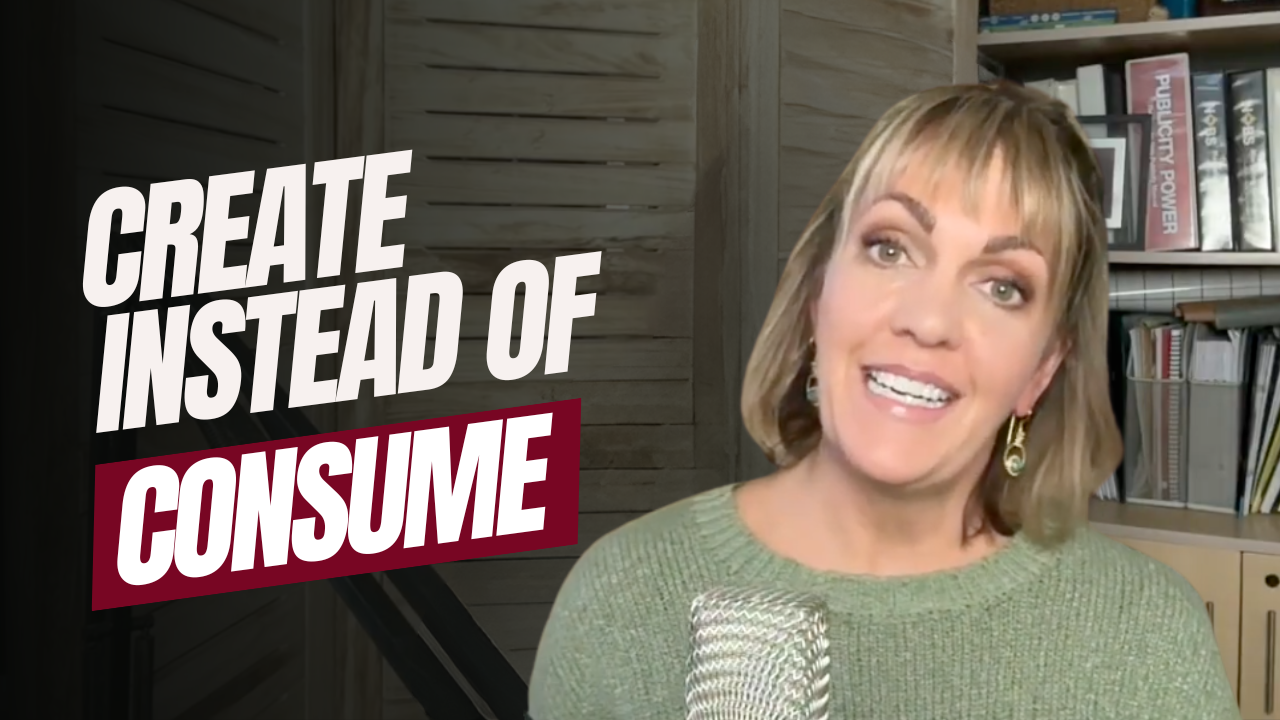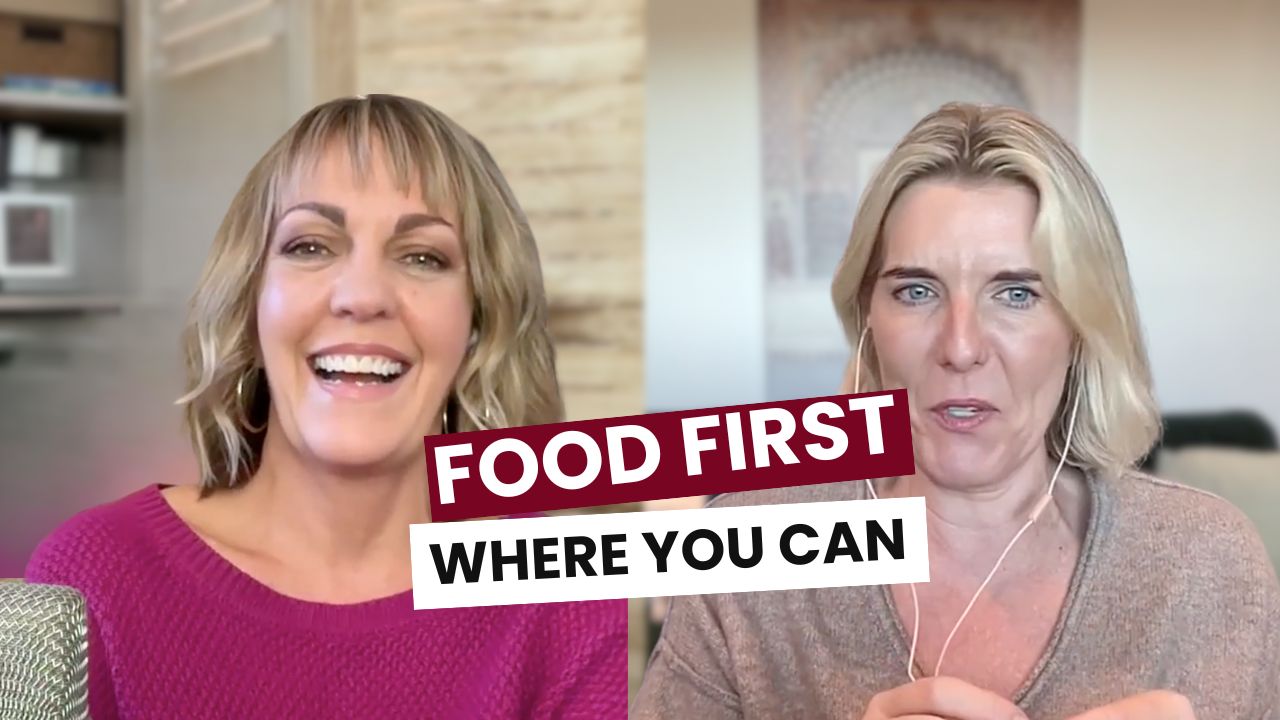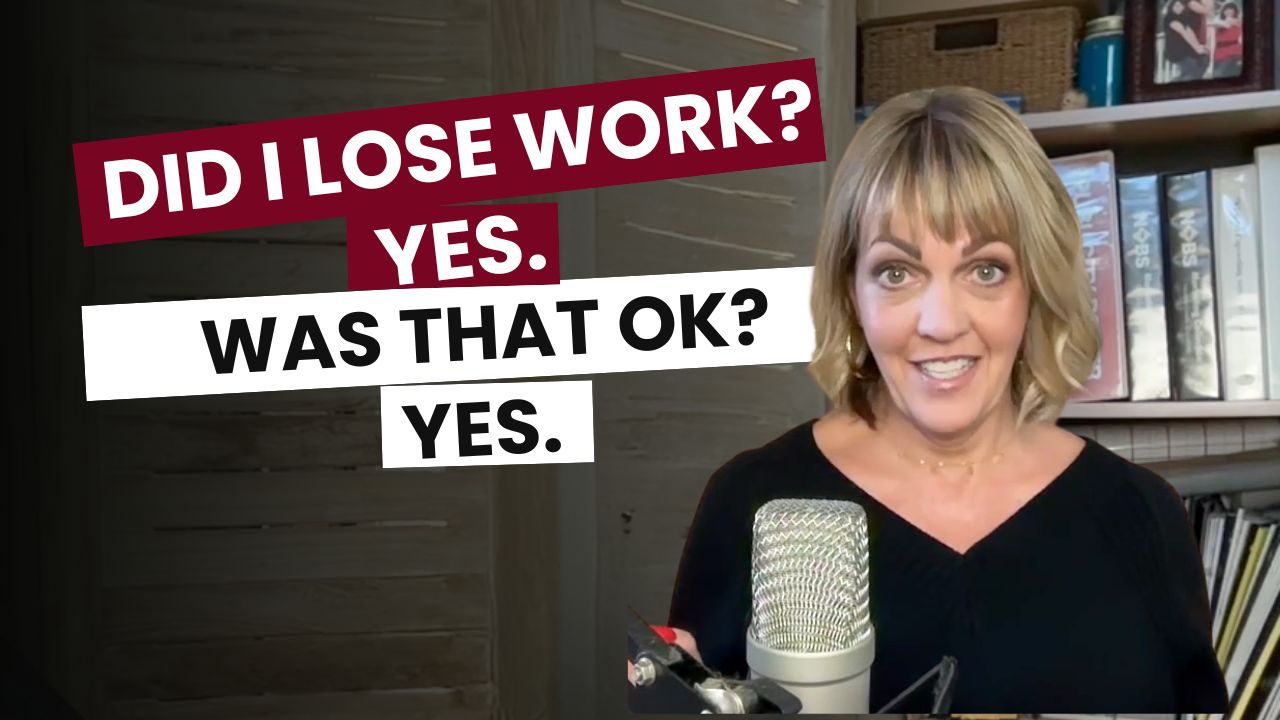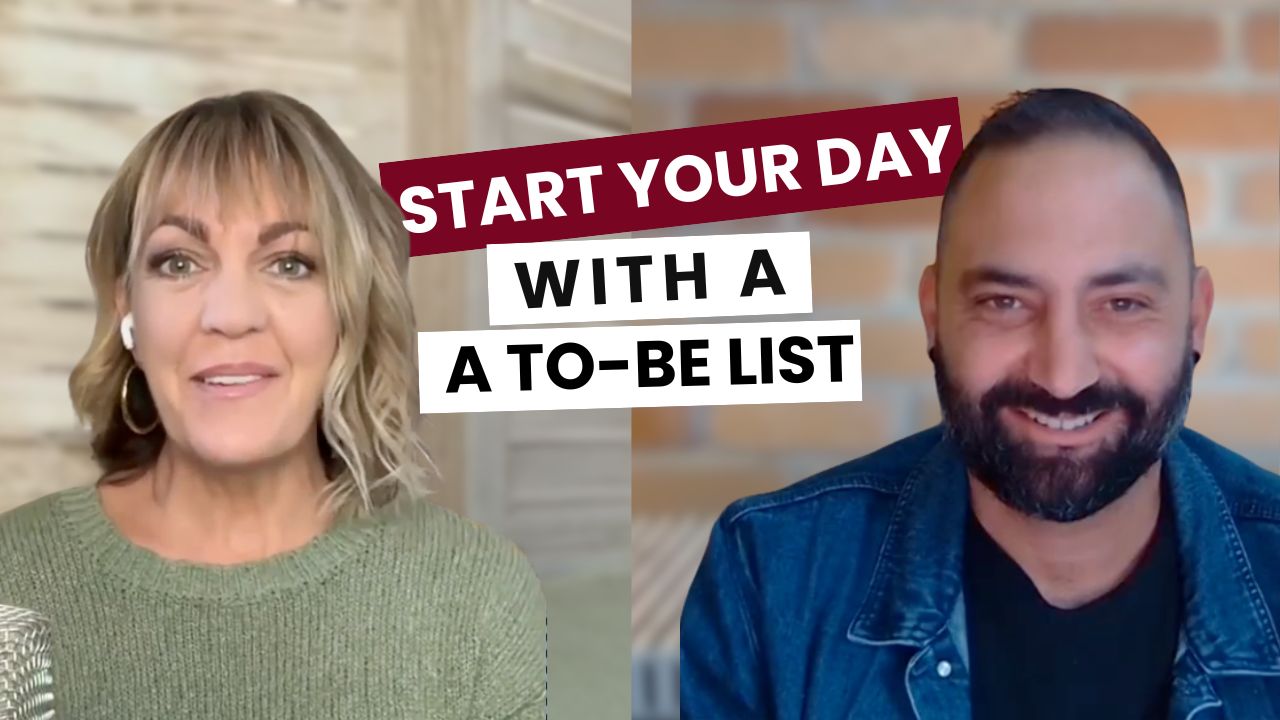Episode 40 Transcript
Heather
Well, hello you guys. Welcome back to episode 40. Now, I thought I'd try something a little bit different in this episode. I really like learning about systems from other businesses. And if you're like me, you probably like the same. It just helps you to get a little bit smarter on your own operations. I mean, you only kind of know what you know, right? So...
Also, if you've listened to my other episodes too, you would have noticed a theme, right? So we're up to 40 now. I've interviewed quite a few amazing guests and most of them talk about systems and automation. And you would have heard them also say that it's never too early or too late to start. So that's what I want to do in some of these episodes is I want to share some of my systems with you guys.
And I thought we'd start now on episode number 40. And I want to talk to you about my podcast systems. So this might be helpful to you if you either have your own podcast, you're thinking of doing one, or you just do content marketing in general. So maybe you're just doing some videos or some probably not audio files, cause you probably would be a podcaster, but just whatever you're doing with your content, you might find some valuable information in how we put together this podcast.
So here's how I create this content that you're listening to or you're watching over on YouTube right now. So I have a Google Drive folder that my team that you'll meet and hear about in a second has access to.
And I have the, I call it kind of like the Holy grail or the Bible of my podcast. It's one big spreadsheet or Google doc or Google sheet, I should say. And on it, it has the episode number. So basically there's different tabs, right? And there's one that's called episode notes and it has the episode number number. It has, um, edit notes. So normally we just get through an episode, no problem. And there's no big issue. Like, but one of my guests my smoke alarm just randomly went off in the middle of the episode. So I had to stop and get up and try and work out how to make my smoke alarm stop. And so I wrote in the edit notes to my team, you know, around this point in time, the smoke alarm goes off. So I'm writing things that they need to be aware about, or, you know, I feel like maybe there's a lag between my interview with the guest, so you might need to sync things a little bit better. So I put the edit notes, the episode and then I put any timestamps for the audio clip that starts each show. So whenever you're listening to the shows there's always like a little audio clip and I feel like that that's kind of a theme or an interesting point that the guest makes. Just something for you to kind of you know bite onto a little bit of information and you think oh this episode sounds kind of interesting I should stay tuned in to listen to the rest of it. So I put little timestamps as well from the raw recording for my team and I say let's use you know from this to this. I know a lot of other people have.
I do it because I like to choose that piece of content. So we have the audio clip, then we put basically the guest in the sheet as well as they book. So we have the order basically. It's me then a guest and me then a guest. And then I write notes for my solo episodes inside of the sheet. But there's other things in there that we have like we have outreach lists, you know, people that I want to have on the show, we have, you know, sample questions that I ask. So it's sort of like the document I always pull up and I'm looking at whenever doing the episode with you.
From there, we have a Calendly event. So Calendly is like a Calendly booking tool. There's others like, what's it called? Once Hub, I think it used to be called Schedule Once. There's Acuity. If you have HubSpot, they have their own internal booking system, but we have Calendly and we have our guests book into Calendly. So I have a pre-allocated days and times where I'm happy to do the interviews. And now as soon as they book in, they get a calendar invite. And in that invite, they have a link automatically to join me in Riverside FM, which is where I record these episodes which I'll talk to you in a moment about but there's a link in there for them to join there's samples of their questions they automatically get automated emails as well that follow up with them leading up to the time it says you know hey your interview with me is 24 hours here's a warning and it has the link in it so they get the calendar invite they get the automated emails my team which I'll talk about prune a second she sends out an email to them once examples of the questions that we'll ask. Remember you have a calendar invite, that's where you have your Riverside link, but here's your link as well. It's audio and video, so make sure you're prepared for that. It just has some other pointers and tips. That's a template that we created together, and she just uses and customizes it if and when needed, and sends it out as soon as they book in.
So then we use Riverside FM to record the podcast. Now, the reason why I like it instead of Zoom is because it has really high definition files. So when you're talking to your guest, or if you're just doing a solo episode, it's uploading a separate audio track and a video track, and it's like really high.
Definition, is that the word? High resolution? It's really good quality. So that is the tool that we use for that. And what I also love about Riverside FM is it automates a transcript within a few minutes after your episode is done. So what I do you guys is...
I, when I'm interviewing the person, I write down a couple really incredible phrases that they say, like just a few words that they say and I go, Ooh, that's a really good point. I like that. And so I'm able to then search in the description or the transcription, I can actually search in it and it takes me straight to that part in the audio, or in this case, I'm watching a video as well. And I can see and remember what it is that they said conversation for the title for the little sound snip snippet that I mentioned that we do at the start of each episode I actually just can search for that phrase find it really quickly and then I can go okay guys here's the timestamp for this bit um but yeah it's I love it for that because it's almost instantaneous to get this transcription and you can find exactly what you need based on the conversation. So then I do that. So after that is done, then yeah, I use those in the titles. I can use those also on the thumbnails, the video thumbnails that we use over on YouTube.
Once all that's done, so you know I have my Google Drive with my information, they've booked in accountally, they've shown up on Riverside FM, then my digital coordinator, she's like my quarter digital coordinator slash assistant Pru, she gets to work. So she basically downloads the video files from Riverside FM.
She then sends them to Natalia. Hi, Natalia, if you're watching. You probably are, because you're editing this right now. So shout out to you. So she sends them to Natalia on my team, and Natalia then creates a YouTube video using my edit notes, and she basically has pre-done a really great intro that's different from the audio version of this podcast. So she edits in the intro. She uses the little timestamp at the start, so she does the little teaser clip, and edits the intro in, does the YouTube video, and then she edits a reel together like a short 60 second or less video of like the key points either of myself for my solo episodes or my guests and then she creates a video thumbnail as well for YouTube so that's her she does all of that and then Prue sends the audio file over to Julian hello Julian I know you're listening as well and he then edits on the intro and outro so we have a pre-recorded intro and outro or end clip a middle ad as well if you're listening to this on audio you'll hear saying like, guys, come on over and get some free resources. That's a pre-recorded little ad that we'll probably change out as we go. And then he does his audio balancing engineering work to make the episode sound amazing. So that's his job. And then from there...
Both Natalia and Julian give Prue the finished files and this is all done in our Google Drive. So everything's under a podcast folder there which is really easy with each episode. So they load in their files and then Prue takes those finished files. She uses a tool called Swell.ai. Swell like S-W-E-L-L dot A-I. There's so many A.I. tools out there I know. So she uses that and she that's a tool that's specialized for podcasting. and it generates show notes. Look guys, they're not very good. I'll be honest. They're decent. They're okay. But I like the timestamps. So it actually generates timestamps for you, which is great. So on our website where we put the episode and also over on YouTube, we have like timestamps in there. So you literally just upload the files and then Swell.ai goes, here's your show notes and your timestamps, like the key things that is being discussed on the show basically. So we have that edit those a little bit because I find the AI is pretty good and in some cases better but for this it needs a little bit of help so I put my own voice in there and sort of anything I can think of to make them a little bit better but they are relatively short they're just sort of a description of the show that sits on our website so I added them a little bit I give back my edited version to Prue all back and forth and in a Google Doc and then basically she schedules the video on YouTube so we have the YouTube version she schedules creates a blog post on our website, schedules that, and then schedules the social media post like the little reel that I told you guys about. So that's all created from her with captions as well. I think she's a swell AI for captions or maybe chat GPT, but she's always asking me to check the captions. Sometimes I fine tune them, sometimes they're okay as is. So then we have that. On the website, we use a plugin called Blurberry and Blurberry is a free WordPress plugin. You can get a paid version if you want them to do statistics and hosting for you of your media or your audio episodes cool because what happens is you set it up inside of your WordPress website and then it automatically allows you to sync your show with all the different podcasting channels like Apple Podcast, Google, you know, Spotify. It's all from the same setup in the same place from within this plugin on your website which is so easy to use. So what happens is when you create a blog post and you put you
By having an mp3 file, the plugin recognizes you have a podcast episode and then it publishes it out. It pushes it out to all the podcast directories. So by the time you hit publish on a blog post with an mp3 file, it goes, ah, that's a podcast. And we categorize it to podcast as well. It recognizes that and within sometimes minutes or an hour, it's live with the show notes on all the different platforms. So that's, we use Blurbory, but many people use Libsum if you don't have WordPress or even if you do there's lots of other tools out there but you just want a tool that's easy to manage and that's what we have for that. So then that happens we use we then use a tool called repurpose.io this is great for you guys that create content what happens is that we have the reel that goes out I think she prue does it in the order we have the reel that goes out on Instagram and then this tool allows you to push it out across all these different platforms at the same time so it goes to it goes to, so we have Facebook, we have obviously Instagram Reels, we have Twitter and we have Pinterest. And so one video that's been created repurposing it across all of my different platforms. And again that's just a simple 60-second spiel of the sort of summary of what I say in the show as well as maybe what my guest says. And I have people that don't even listen to the full show. They don't even subscribe or listen to the show in full but they just watch those videos
They love those and they'll tell me about it. They're like oh that video that you released on Facebook was so good It like gave me such a great tip. So that's the thing about content you guys You just never know how people want to consume it, right? Some of you I know watch on YouTube some of you like the typical audio some of you are just watching the little snippets
So that's repurpose.io and then we use my CRM Entreport. That's what I've used since 2010 when it was called Office Autopilot, but CRM, you know, like active campaign, HubSpot, MailChimp, whatever, right? There's so many, there's no right or wrong, but we use that one and because I've used it forever and then schedule emails out. So certain episodes I'll send out to my database, my most popular ones, for example, and then I write the email, I give it to Prue and then sometimes she writes it to it and then she schedules it to go out to our list or segment of our list.
From there, we're almost done. I know this is a big system list, isn't it? From there, we then take the reels that perform well, and then I just boost them a little bit into a meta ad. If they're performing really well organically, I'm using those to build a warm audience of people that are watching my content. And then from time to time, I promote things to them. So whether it's live event or whether it's webinars or whether it's just get on a call with us, we can help you with your website or your Google Ads, we have this list that we've been nurturing or this audience we've been nurturing of people that are watching our videos. So certain you know, snippets of the podcast have really great business advice or just mindset advice in general will just boost them and I'm building this audience of people that are being exposed to the brand. So there's that. I think that's the plan. Yeah, I've covered it all from brainstorming all the way through to publishing. That is our podcasting system. As you can tell, I'm involved in bits and pieces of it. But really, I would say it's a four man team in this case with Prue, with Natalia that helped with this incredible show that you are listening to or watching wherever you're listening to or watching it from. So you guys, I think that's it. Like the best thing is with this is to do your best to develop systems that are going to work for you. Obviously there's probably going to be pieces that you need to be involved with, especially content production. But you know, remove all the bits that maybe don't make sense for you to do. That's it for this episode. Thank you so much for tuning in as always, and I'll see you next time.





